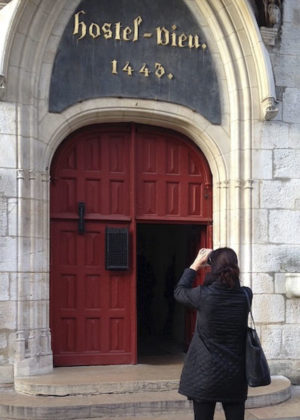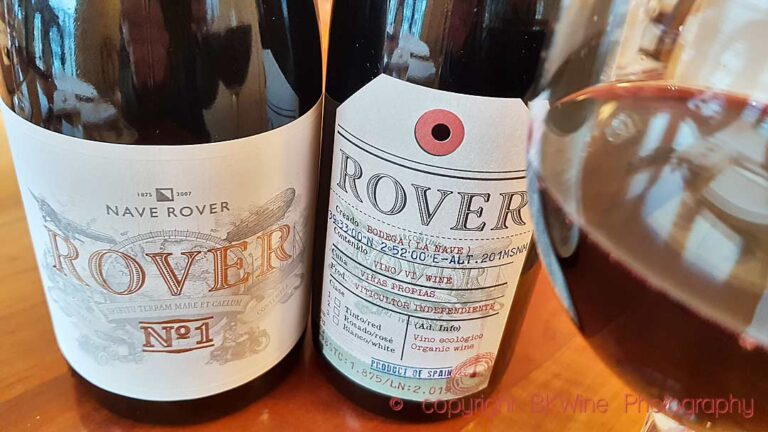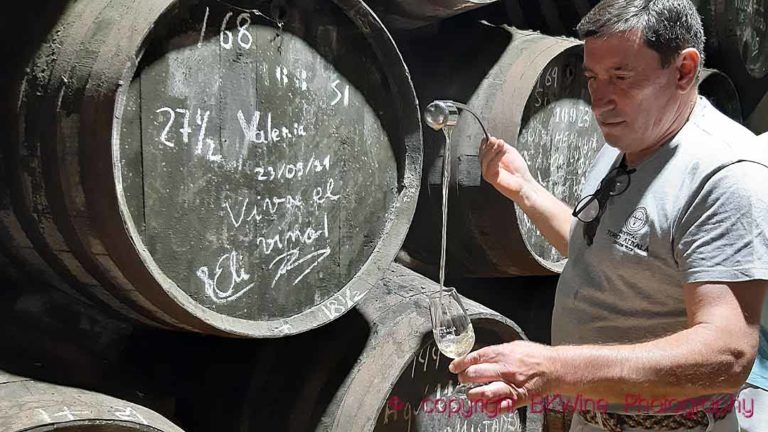“Singular terroir, estate character, noble pedigree”
Sometimes a winery doesn’t just surprise you – it knocks you on your palate.
I discovered such a winery by happy accident while tasting wines from another country, Achaval-Ferrer of Argentina. Those wines lassoed me with their verve, and vibrancy. Turns out the same team, part of the Stoli Group empire, purchased an artisan winery in Spain in 2015.
Today we talk to CEO and wine maker Manuel Louzada about his Navarra venture Arínzano, the first Vino de Pago designated winery in Northern Spain.
For those of you unfamiliar with Arínzano, the winery recently went ‘full gaucho’ here in the United States, winning the Champion Best of Show saddle prize for its Arínzano 2010 Gran Vino Chardonnay at the Houston Livestock Show and Rodeo International Wine Competition award ceremony in February 2017. This event marks the first time in the competition’s fourteen-year history that a white wine emerges the winner, and the first time that the winner hails from Spain.
Manuel Louzada shares his thoughts on Arínzano’s international success here.
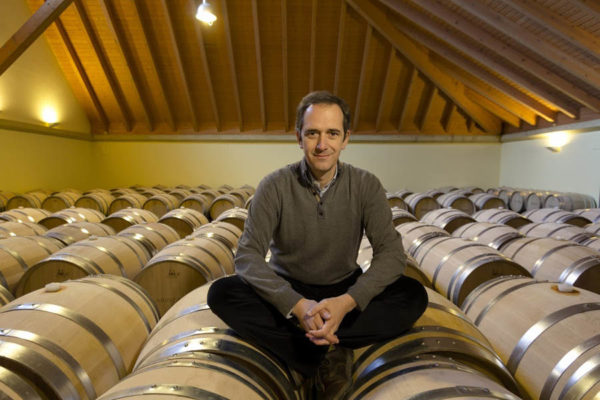
LM Archer, BKWine: Arínzano is Northern Spain’s first Vino de Pago certified vineyard, Spain’s highest category for winemaking, above D.O.Ca. Can you explain to readers the exhaustive requirements necessary to achieve this certification, including climate, terroir, and winemaking? Why was it so important to Arínzano to achieve Vino de Pago certification?
Manuel Louzada:
-First, the Spanish Wine Classification is regulated by law and extremely strict, approved as well by the EC (European Community). In this particular case, the law 24/2003 de la Viña y del Vino contains the Wine Classification, which resembles a sort of hierarchical pyramid, from the Vino de Mesa (which has a wide source of grapes, being the least exclusive) to the highest, most exclusive both in quality and availability, as it comes from a single property, Vino de Pago (from the Latin pagus, determined district of agricultural land, mainly vineyards).
The Vinos de Pago have to go through exactly the same exhaustive requirements as the D.O.Ca, like Rioja or Priorat. To start, vineyards must be located in a limited area and produce wines which have to be made and bottled in the region and before being release to the market submitted to the control organizations – Consejo Regulador, INTIA and EC in the case of the D.O.Ca, while INTIA and EC for the Vinos de Pago – so that these wines are authorized to be sold.
To achieve the Vino de Pago category, you have to demonstrate to the most important public organizations, INTIA and EC, the uniqueness and exclusivity of your terroir, through a highly extensive in-depth study of soil and climate. Once this is proven, you have the obligation to produce wine for ten years and submit for organoleptic and physical-chemical analysis. This is not only to demonstrate consistency but, most importantly, to demonstrate that the wine has unique and singular characteristics. As you can see, it is not a simple process. On top of this, if at some point during that 10-year process—since you are the only representative—the wine does not reach the established standards for characteristics or the quality you risk losing this particular appellation.
The founding goal of Arínzano wines is to reflect the uniqueness and exclusivity of the amazing terroir where the different vineyards have been planted, therefore it was a natural evolution to become the first Vino de Pago in Northern Spain.
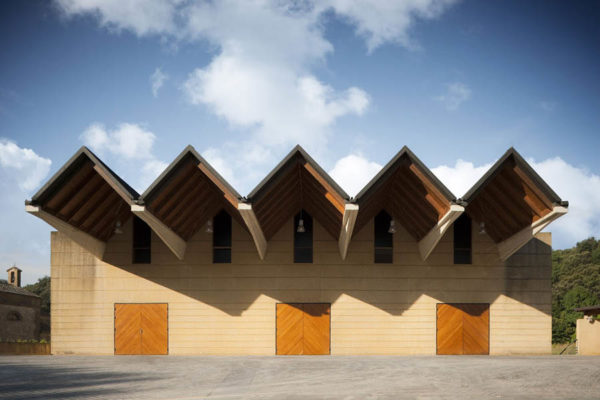
The history of Arínzano reads like something out of a Gabriel García Márquez novel – a noble estate founded in the eleventh century by Sancho Fortuñones de Arínzano, selected by another nobleman in the 1600’s for the site of a palace. Over time, the estate lapses into ruin, only to be rediscovered in 1988. Today, in addition to its Vino de Pago certification, it’s the only vineyard in Spain certified by World Wildlife Fund (WWF) for environmental responsibility. Can you briefly touch on the efforts Arínzano has made in four critical areas, and why the WWF is so important to Arínzano?
NOTE: The four critical areas:
- The conservation and restoration of the natural environment: half of the estate is reserved for indigenous flora and fauna.
- Organic viticulture with a low-environmental impact, and integrated pest control.
- Use of only certified environmental materials in the construction of the winery.
- Natural waste water filtration through a series of lagoons.
Indeed, the history of Arínzano is fantastic. In some parts of Spain, the presence of vineyards was naturally tied to the economic situation of the area, especially in such a naturally rich region. During the least favorable economic conditions, some vineyards were uprooted to plant cereal grains, to feed the population, while when the economic conditions improved, vineyards were planted to enjoy wine, which was always recognized for its exceptional quality, with the locally produced foods.
I believe that these cycles influenced the fact of having not vineyards in the property which led to its re-discovery in 1988. When you have in your hands such a magnificent estate, with incredible natural conditions, you feel immediately compelled to concentrate all your efforts to permanently take care of the environment. The fact that we have been recognized by the WWF is the result of all the daily efforts in the above mentioned areas. As a result, all the team is extremely proud and you can easily sense this difference when seeing the vegetal and animal diversity or the natural conditions of the Ega River.
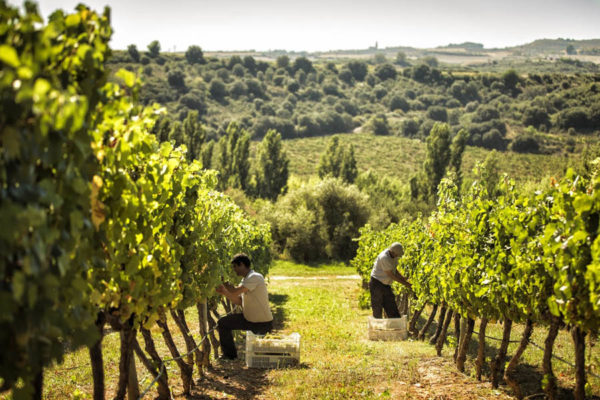
Arínzano lies in northwestern Navarra, in a valley formed by the last slopes of the Pyrenees Mountains. It comprises 355 hectares – 128 dedicated to Vino de Pago certified vineyards. Soils include loams, sand, limestones, limonites, gypsum and dolomites. Both marine and Ega River influences impact the climate, and the region enjoys over 2500 hours of sunlight annually.
Talk about the grape varieties that you’ve chosen to cultivate here, and how the mélange of soil types and micro-climates impact the unique wines created at Arínzano.
When applying for the Vino de Pago Classification, we understood one of the most significant particularities of this magnificent property is the diversity of its micro-climates. The grape varieties were chosen by taking into account the type of soil and the overall climatic conditions as well as the movements of the Cierzo wind (a cold and dry wind coming from the North) through the property, the orography of the mountains, and finally the proximity of the Ega River, which translates into a milder climate.
The Chardonnay, for example, was planted in the higher parts of the property with very poor and superficial soils but optimal limestone. The temperature there is colder as the result of the combination of higher elevation and the Cierzo influence.
On the opposite is the Merlot, which is planted in slightly richer soils, protected from the wind by the Populus trees and benefitting from the naturally milder, slightly more humid conditions generated by the Ega River.

Do any of Arínzano’s production methods differ from other wineries in Spain? If so, how?
At Arínzano, we are convinced that the style of our wines must reflect the terroir where they come from. Starting almost two years ago my team, Diego Ribbert and José Manuel Rodriguez, and I dedicated our lives to understand each and every individual character of the Arínzano vineyards throughout all the vegetative cycle.
We decided the most appropriate moment of harvest by walking each plot of vineyard and adopted the most appropriate winemaking technique to express and, if possible, help enhance the magnificent virtues of this terroir.
Finally, the choice of barrels, only French, is in line with the wines obtained and the pursued style of the wine. The wines aging in barrel are tasted monthly to follow their evolution and to precisely decide when to blend and bottle.
In my opinion, on one hand, almost each and every winemaking technique has been discovered. On another hand, the majority of the high quality winemaking equipment is available for anyone. For me it is the importance of the terroir, the sensitivity to understand, protect and translate into the wine these particular characteristics together with maximum attention to details and handcrafted winemaking, as described before—this allows us to make the exceptional wines that we envision.
Both Arínzano and the Stoli Group winery in Argentina, Achaval-Ferrer, share certain unique similarities, viz., geographically challenging sites with diverse soils, complex micro-climates, and culturally rich histories. Is acquiring Arínzano part of a deliberate strategy, part pure luck, or a combination of both?
Indeed, it is part of a deliberate strategy to have exclusively included in our portfolio so far such fantastic brands as Achaval-Ferrer and Arínzano. As a matter of fact, the characteristics mentioned in your question are the pillars to achieve exceptional wines and afterwards to allow the brands to grow as references in the world of wine amongst the highest reputed wines.
Arínzano draws thousands of visitors annually to its serene idyllic location in Northern Spain somewhere between Priorat and Bordeaux.
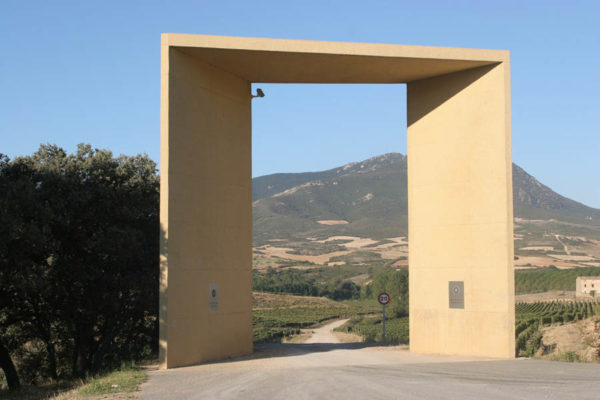
Arínzano employs a unique business model, a model which also includes luxury accommodations, tasting experiences, and cultural events. How have guests responded to these additional amenities? Do you have any upcoming events or amenities that particularly excite you?
Throughout my personal and professional experience, I have received continual feedback that after visiting the vineyards, walking the winery, talking to viticulturists and wine makers to have a sense of their work and tasting both the wines in barrel and from the bottle at the winery, visitors had a much more complete experience and stronger connection to the wine. I wholeheartedly agree and also firmly believe that, if all the visitors experience the same values at each and every moment of the visit, these will translate into a long-lasting memory.
One unique experience we are developing for a future visitor offering is a 3-day visit taking advantage of the San Fermin Festival timing in early July. We design a winery visit that allows time in the vineyards and the winery, to understand our artisanal winemaking philosophy, to taste the wines in barrel and from our wine library, while enjoying the most celebrated moment in Pamplona [the Running of the Bulls.] To date this is an experience for our global team and select journalists, which was so much fun throughout the visit last year that I’m very much looking forward to hosting the 2017 experience.
Anything else you’d care to share with readers about Arínzano?
First of all, I would very much like to thank you for giving me the opportunity to explain a little bit more about Vinos de Pago which, in my opinion, will soon be the future of Spanish Wine.
Secondly, and after all being said, I can only invite the readers to come to the property to live the complete Pago de Arínzano experience. As once someone I very much admire taught me “…it is not important to invite someone, it is important that the invitation has been accepted…”
Finally, if your experience as a winemaker and owner of world-class vineyards has taught you anything, it’s taught you…?
I believe it has taught me almost everything I know. My personal background is not very typical for a winemaker… I’m the fourth generation of a family dedicated to the wine business. The first time that I have tasted wine was at the age of five, a tiny amount of Sparkling Wine from my family winery, Caves Messias, in the Bairrada region, which started my passion for wine.
I studied in Spain and started my formal professional life in Portugal making port wine. Later I was invited to move to Argentina, to be in charge of sparkling wine of the most recognized producer, Chandon Argentina. Later, during my experience in Argentina, I was in charge of winemaking of all the wines production, sparkling, still and “iconic still wines”, which allowed me to return to Spain and be in charge of Numanthia (Termanthia was one of the first five wines from Spain honored with 100 points by Robert Parker).
Almost over two years ago, I took on a new challenge by assuming leadership of such a recognized brand like Achaval-Ferrer and one of the hidden jewels of Spain, the Vino de Pago de Arínzano. With all this in mind, after studying winemaking and becoming passionate about making wines that reflect the terroir from where they originate, I have learned throughout each and every experience, especially with generous people equally willing to share their experiences.
More on the vineyard: arinzano.com
Photography: © Copyright Arinzano, used with permission.
LM Archer is a freelance writer based in Seattle and California. She is Francophile who considers wine an art and Burgundy the centre of the universe. She is the founder and editor of binNotes | redThread.


